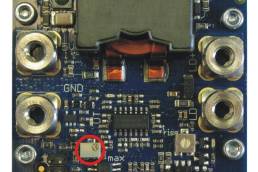What is the difference between CW mode and pulse mode for laser diode drivers?
CW operation in laser diode drivers stands for continuous wave, i.e. continuous operation of the laser diode with a constant current. The constant current means that light is emitted continuously. With many laser drivers, an analog modulated waveform can also be selected in addition to the constant current. For example, sinusoidal, rectangular or triangular shapes are possible.
Applications for CW laser drivers include laser welding, the treatment of surfaces with lasers or as part of show lasers.
In pulse mode, on the other hand, the current is pulsed. The current is therefore emitted in short, time-limited pulses. The pulse length depends on the desired application. The laser driver is also selected accordingly. There are numerous different versions, with drivers ranging from fixed pulse durations to variable pulse durations and adjustable pulse shapes.
Applications for pulse drivers include LIDAR, SEED, (distance) measurement or in biochemistry.
Overall, the peak power is usually higher for pulse drivers, but the average power is higher for CW drivers.
Incidentally, QCW (quasi-continuous wave) drivers and C drivers combine the properties of CW and pulse drivers within certain limits.
